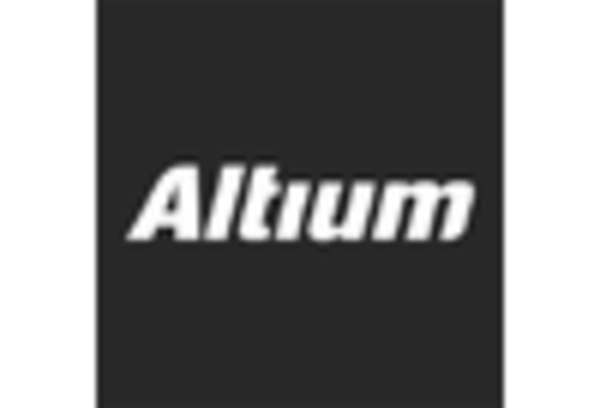Cost Efficiency and Scalability
Cost efficiency remains a critical driver for the cloud electronic-design-automation market in the GCC. Organizations are increasingly recognizing the financial advantages of cloud-based solutions, which eliminate the need for substantial upfront investments in hardware and software. By leveraging cloud services, companies can scale their electronic design automation capabilities according to project demands, optimizing resource allocation. Reports suggest that businesses can reduce operational costs by up to 30% by transitioning to cloud-based platforms. This financial incentive is likely to propel the adoption of cloud electronic-design-automation solutions, as firms seek to enhance their competitive edge while managing budgets effectively.
Government Initiatives and Support
Government initiatives in the GCC region are playing a pivotal role in fostering the growth of the cloud electronic-design-automation market. Various national strategies aim to promote digital transformation and innovation, encouraging businesses to adopt advanced technologies. For instance, initiatives such as Saudi Arabia's Vision 2030 and the UAE's National Innovation Strategy are designed to enhance the technological landscape. These programs often include funding, incentives, and infrastructure development, which can significantly benefit the cloud electronic-design-automation market. As a result, companies are likely to invest more in cloud solutions, aligning with governmental goals for economic diversification and technological advancement.
Integration of Advanced Technologies
The integration of advanced technologies is emerging as a key driver for the cloud electronic-design-automation market. The convergence of technologies such as IoT, big data analytics, and AI is transforming the landscape of electronic design automation. In the GCC, companies are increasingly seeking to incorporate these technologies into their cloud solutions to enhance design efficiency and accuracy. This trend is supported by the growing availability of high-speed internet and improved connectivity across the region. As organizations strive for innovation, the cloud electronic-design-automation market is likely to witness a surge in demand for solutions that leverage these advanced technologies, potentially leading to more sophisticated design processes.
Rising Demand for Remote Collaboration
The cloud electronic-design-automation market is experiencing a notable surge in demand for remote collaboration tools. As organizations in the GCC region increasingly adopt hybrid work models, the need for efficient collaboration platforms becomes paramount. This shift is driving investments in cloud-based electronic design automation solutions that facilitate real-time collaboration among geographically dispersed teams. According to recent data, the GCC's cloud computing market is projected to grow at a CAGR of 20% from 2023 to 2028, indicating a robust appetite for cloud solutions. This trend is likely to enhance the capabilities of the cloud electronic-design-automation market, enabling engineers and designers to work seamlessly across borders and time zones.
Focus on Sustainability and Green Technologies
Sustainability is becoming an essential consideration for businesses in the GCC, influencing the cloud electronic-design-automation market. Companies are increasingly prioritizing eco-friendly practices and seeking solutions that minimize their environmental impact. Cloud-based electronic design automation tools can contribute to sustainability efforts by reducing energy consumption and optimizing resource usage. Furthermore, the shift towards green technologies aligns with the GCC's commitment to diversifying its economy and reducing carbon footprints. As organizations adopt more sustainable practices, the demand for cloud electronic-design-automation solutions that support these initiatives is likely to grow, reflecting a broader trend towards environmental responsibility in the region.

















Leave a Comment